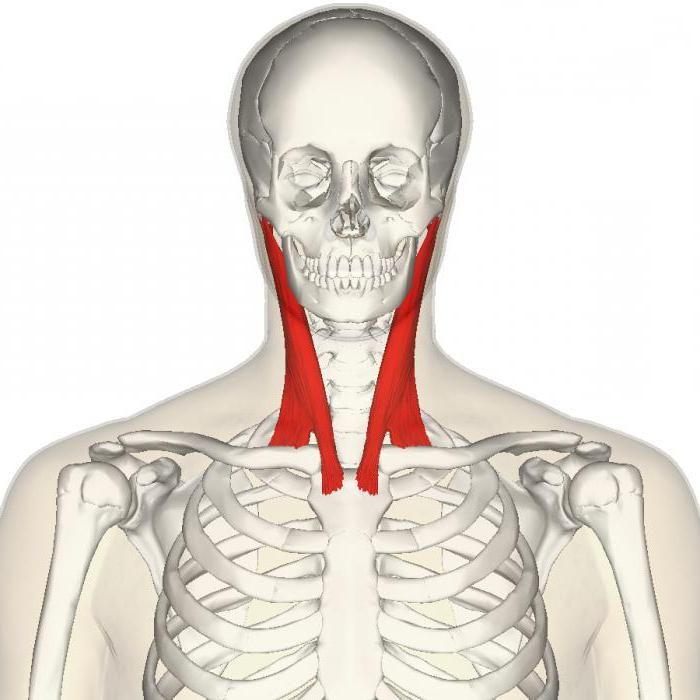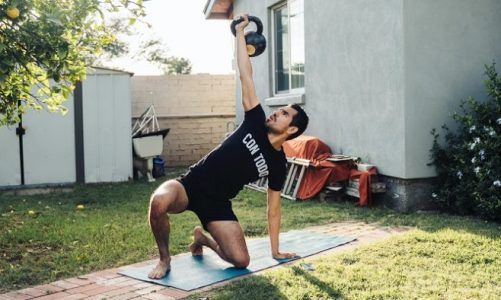When a neurological warm-up is needed
Many people remember their first trips to the gym or attempts to exercise on a mat at home: their back is round, the body is not obeying, the technique suffers and a quality workout, in the end, does not happen. Beginners start to think that this is due to lack of training experience, but in fact the problem is in the connective tissue: the receptors do not supply the brain with the right signals.
The brain sees the body like a jigsaw puzzle, and even if one piece is missing, the picture is incomplete. Connective tissue works in a similar way to a puzzle. If signals from the receptors do not reach the brain, you lose control of your movements. This leads to incorrect technique and injuries.
For example, if one wears uncomfortable or rigid orthopaedic shoes since childhood, the brain can no longer get information from the receptors in the foot. I often talk about the importance of working with the foot precisely because there are more than a thousand receptors there – thanks to them the brain sees an adequate picture of everything that is going on in the body. As a result, women complain: flanks growing, butt hanging out, nothing helps. If the receptor connection is damaged, trying to pump up glutes or remove ‘calves’ with exhausting workouts is meaningless.
A 10-minute workout from neurology doctor Eric Cobb
Revitalise your nervous system and proprioception* with a special neurological workout. It only takes 10 minutes and consists of seemingly fun neurological exercises. Performed before the workout (before the MFR and joint warm-up). These movements were developed by Dr Eric Cobb, a neuroscientist, and have been introduced as rehabilitation in absolutely different populations, from housewives to professional athletes. This kind of warm-up is particularly useful for those with a sedentary lifestyle.
*Proprioception is the body’s connection with the brain, the signals that our connective tissue must constantly send to the central nervous system in order for it to understand: where my body is, what it is doing and in what position.
A set of 7 neurological warm-up exercises:
1. Face warm-up
Starting position: sitting or standing.
Stretch the face in circular movements, around 10 times.
2. Head warm-up (engaging the aponeurosis)
Initial position: standing up with the top of the head stretched upwards.
Run your hands to the roots of the hair and start combing the entire surface from forehead to occipital tubercles. You can also use your fingers to move the skin on your head to improve circulation.
Then massage the ears alternately from the bottom of the lobe and upwards. Do 10 repetitions for each ear. Remember to breathe calmly and deeply.
3. Warm up the sternocleidomastoid muscle
The sternocleidomastoid muscles are two bands running from the base of the head on both sides of the neck on the left and right.

Starting position: standing, head is pulled up, feet resting on the floor. Breathing is even.
Use two fingers to grip the muscle 10 times from the bottom upwards (it is important to grip the muscle itself, not to pull the skin away!) or just stroke the areas.
Then stroke the platysma (the front of the neck) with the palms of your hands from the base of the chin to the collarbones.
Find the area of the occipital tubercles at the base of the neck and massage them 10 times.
The skin on your sternum should be as mobile as on your elbows. Therefore, first rub the sternum area and then grasp the small fold in the centre and roll it upwards to the collarbones. The skin should be easy to grip with your fingers. A few strokes are enough.
Make sure that the shoulders are not pressed against the ears to avoid clamping. Also, if you have sharp nails, take care not to traumatise the skin – it is better to take a spiked massage ball and roll this area lying on your belly.
4. Warm up the most emotional muscles of the body
Stroke the abdomen in several circular movements. Using your fingers or a massage ball, stroked the upper trapezius: area at the back of the neck, above the shoulder blades, between the shoulder blades and under the shoulder blades. 10 times on each side.
5. Sacrum warm-up
Starting position: stand up, place your hands on the sacrum (the area between lumbar and coccyx vertebrae).
Start moving the skin on the sacrum with your fingers. The movement will feel like scratching. Directions: up and down, left and right, diagonally (drawing a ‘star’).
The skin in this area should be mobile. Working against adhesion of tissues here prevents injury during workouts and affects overall mobility of the body.
6. Warm-up of the pelvic area
Initial position: standing with shoulders down, knees slightly bent and body relaxed.
Place the thumbs on the “venus dimples” (sometimes visible dimples in the lower back, above the gluteal cleft).

Tilt the pelvis back and forth in the smallest amplitude, almost imperceptible to the eye, making a slight circular movement of the pelvis.
If you don’t catch the pelvis working, rub the sacrum area again and tilt the pelvis only forwards and backwards.
7. Foot warm-up
Starting position is lying on the floor.
Remove shoes and socks, rub the whole skin area of each foot: sides, top. Then stand on your feet, stretch the top of your head up and try to press each toe, one by one, on the floor. You should feel how each toe is activated separately. Then you can also try raising and lowering each toe to the floor.
Don’t look at your feet! It is enough to mentally direct your attention to the work of the toes, as this is what will improve the connection between the brain and the function of the foot. If you can’t get one of your toes to work, then your body’s proprioception is broken and your brain can’t ‘see’ the toe and use its function in everyday life (this often happens because of wearing tight shoes, for example).




